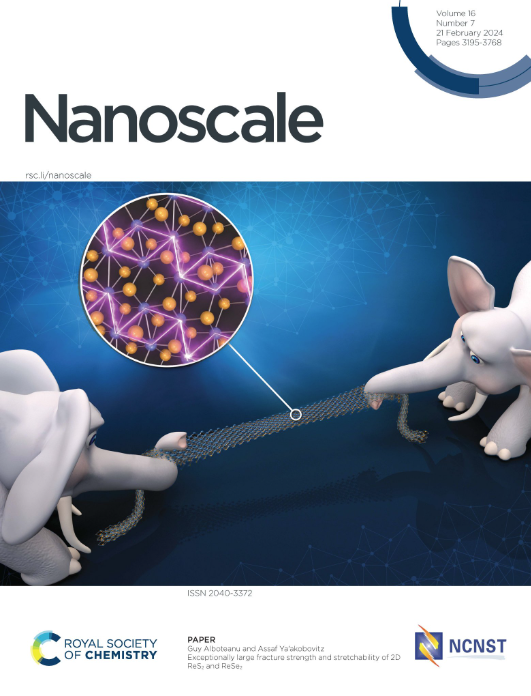Catalytic and Biological Properties of Ag-Pt Bimetallic Nanoparticles: Composition-Dependent Activity and Cytotoxicity
IF 5.8
3区 材料科学
Q1 CHEMISTRY, MULTIDISCIPLINARY
引用次数: 0
Abstract
Due to their unique elemental compositions and interface coupling effects, bimetallic nanoparticles (BNPs), a class of nanoalloys, have attracted significant attention for applications in biomedicine, environmental remediation, and catalysis. BNPs, formed via the combination of two metal ions under light or thermal conditions, exhibit enhanced catalytic properties due to synergistic interactions between constituent metals, which result in optimized electronic structures, increased active sites, and reduced activation energy for catalytic reactions. However, BNPs may pose potential toxicity risks to organisms through bioaccumulation and environmental exposure. In this study, Ag-Pt nanoparticles (AP NPs) with varying molar ratios were synthesized and characterized to elucidate the relationship between composition, catalytic activity, and cytotoxicity. Catalytic assays revealed that AP NPs exhibited remarkable oxidase-like activity. Cytotoxicity tests revealed dose- and composition-dependent effects, with the AP55 (Ag:Pt at 5:5 ratio) exhibiting the highest cytotoxicity compared to monometallic counterparts at equivalent concentrations. Notably, the proportion of Ag in the AP NPs was identified as the dominant factor influencing catalytic activity and cytotoxicity. Mechanistic investigations attributed this cytotoxicity to the interplay of peroxidase-like catalytic activity, oxidative stress, and lysosomal ion release, disrupting cellular redox homeostasis and triggering apoptosis. Enzymatic assays further confirmed reductions in antioxidant defenses, including superoxide dismutase (SOD) and catalase (CAT) activities, amplifying reactive oxygen species (ROS) generation and oxidative damage. These findings underscore the critical role of catalytic behavior in mediating biological interactions and cytotoxic effects of BNPs. We establish a relationship between composition, oxidase-like activity, and cytotoxicity, providing insights into their potential biomedical applications and paving the way for the rational design of multifunctional nanomaterials with tunable biological effects.求助全文
约1分钟内获得全文
求助全文
来源期刊

Nanoscale
CHEMISTRY, MULTIDISCIPLINARY-NANOSCIENCE & NANOTECHNOLOGY
CiteScore
12.10
自引率
3.00%
发文量
1628
审稿时长
1.6 months
期刊介绍:
Nanoscale is a high-impact international journal, publishing high-quality research across nanoscience and nanotechnology. Nanoscale publishes a full mix of research articles on experimental and theoretical work, including reviews, communications, and full papers.Highly interdisciplinary, this journal appeals to scientists, researchers and professionals interested in nanoscience and nanotechnology, quantum materials and quantum technology, including the areas of physics, chemistry, biology, medicine, materials, energy/environment, information technology, detection science, healthcare and drug discovery, and electronics.
 求助内容:
求助内容: 应助结果提醒方式:
应助结果提醒方式:


